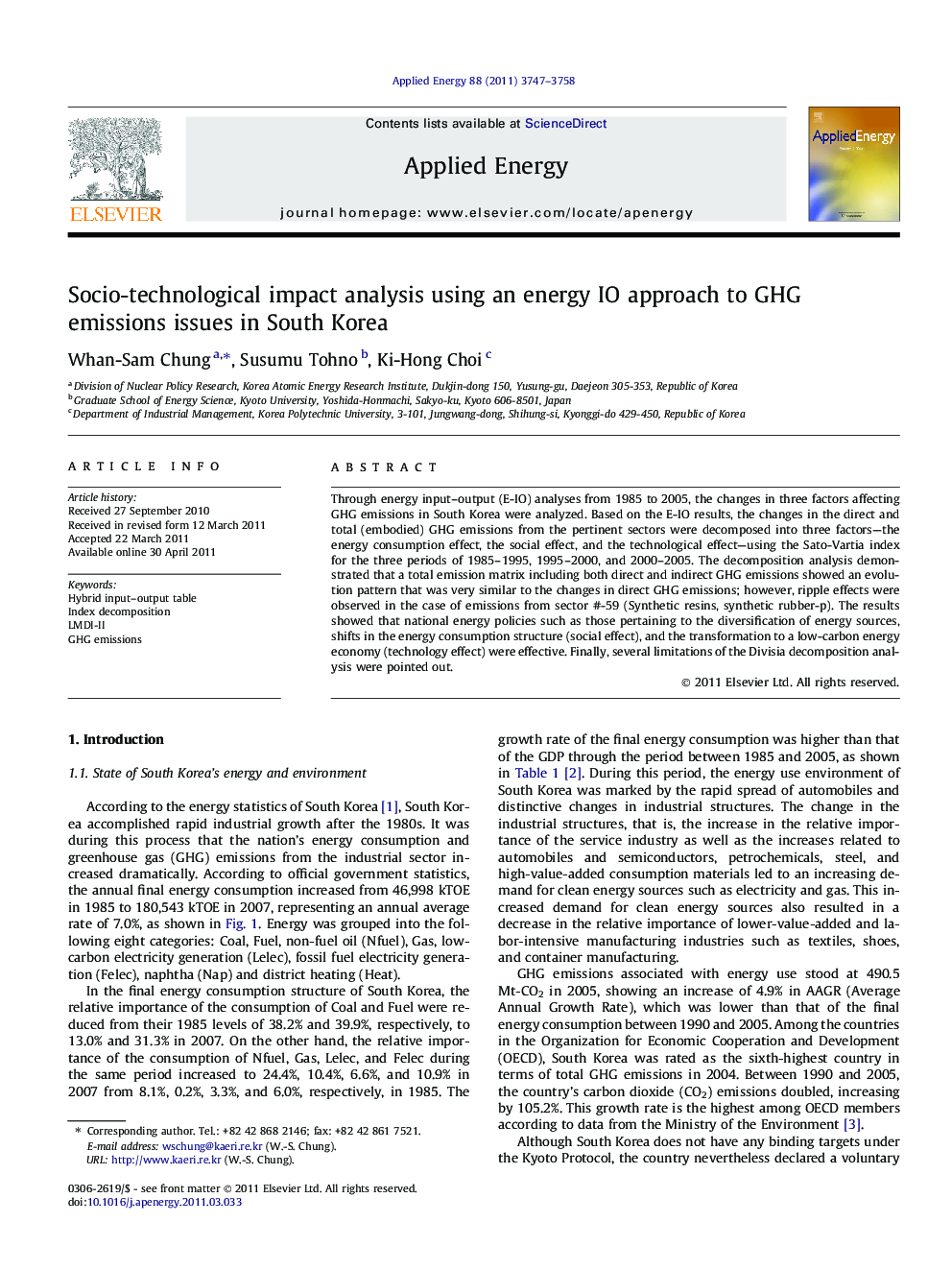| Article ID | Journal | Published Year | Pages | File Type |
|---|---|---|---|---|
| 244182 | Applied Energy | 2011 | 12 Pages |
Through energy input–output (E-IO) analyses from 1985 to 2005, the changes in three factors affecting GHG emissions in South Korea were analyzed. Based on the E-IO results, the changes in the direct and total (embodied) GHG emissions from the pertinent sectors were decomposed into three factors—the energy consumption effect, the social effect, and the technological effect—using the Sato-Vartia index for the three periods of 1985–1995, 1995–2000, and 2000–2005. The decomposition analysis demonstrated that a total emission matrix including both direct and indirect GHG emissions showed an evolution pattern that was very similar to the changes in direct GHG emissions; however, ripple effects were observed in the case of emissions from sector #-59 (Synthetic resins, synthetic rubber-p). The results showed that national energy policies such as those pertaining to the diversification of energy sources, shifts in the energy consumption structure (social effect), and the transformation to a low-carbon energy economy (technology effect) were effective. Finally, several limitations of the Divisia decomposition analysis were pointed out.
► Using the Sato-Vartia index for the three periods of 1985-1995, 1995-2000, and 2000-2005, the changes in three factors affecting GHG emissions in South Korea were analyzed. ► A total emission matrix including both direct and indirect GHG emissions showed plain shape; however, ripple effects were observed in some sectors. ► This process is useful in measuring national energy policies. ► Several limitations of the Divisia decomposition analysis were pointed out.
